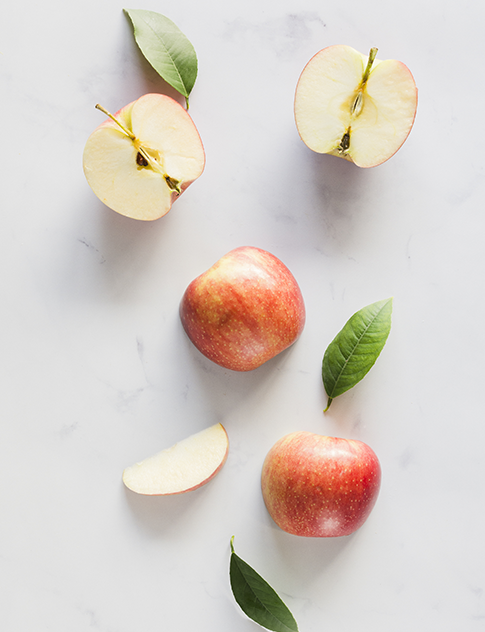Apples: Properties and Benefits
It is definitely the most widespread fruit in Italy, where it’s always considered a synonym of health and wellness. For about 85% of their weight apples are made of water.
The remaining part consists mainly of carbohydrates and vitamins, including vitamin A, E, C.
An Apple a day keeps the doctor away
This fruit contains few proteins and fat is almost absent, (100 grams of apple corresponds to about 40 calories, 10 grams of sugars and large amounts of potassium, vitamin B, citric acid and malic acid).
It is well tolerated by diabetics because it has few sugars, but not only: it contains about 2% of fiber including pectin, known for its many benefits. It also has the power to “control” glycaemia, thus regulating the absorption of sugars.
Nutritional properties of the Apple
Nutritionists report that for every 100 grams of edible product, the average content is about 85 grams of water, 0.2 grams of protein, 0.1 grams of fat, 11 grams of various sugars, including fructose, glucose, and sucrose, 2 grams of fiber, for a total of about 45-50 calories, and about 4 grams of mineral salts including potassium, sulfur, phosphorus, calcium, magnesium, sodium, iron, as well as traces of copper, iodine, manganese zinc, and silicon.
The apple is also rich in vitamins: C, PP, B1; B2, A, and also contains malic acid (about 0.6-1.3 grams). Both in the pulp and in the skin there are also ethers, tannins, alcohols, aldehydes and a high number of terpenes that make the scent and taste of apples infinitely varied. The values indicated may vary according to the degree of ripeness of the fruit and quality, also because there are more than a thousand varieties of apples in the world today”.



